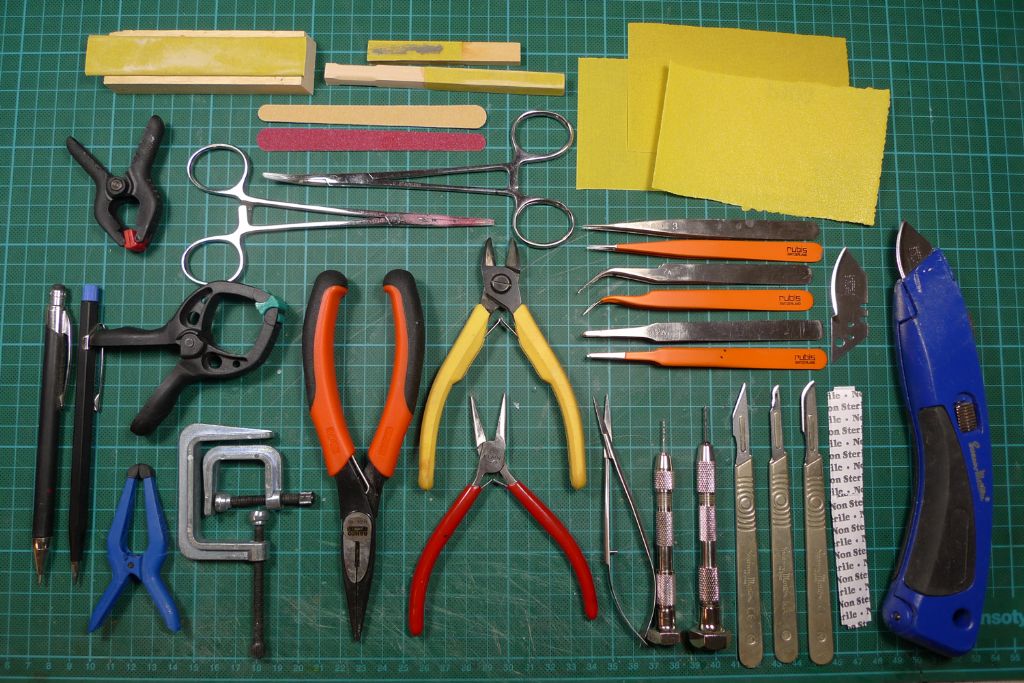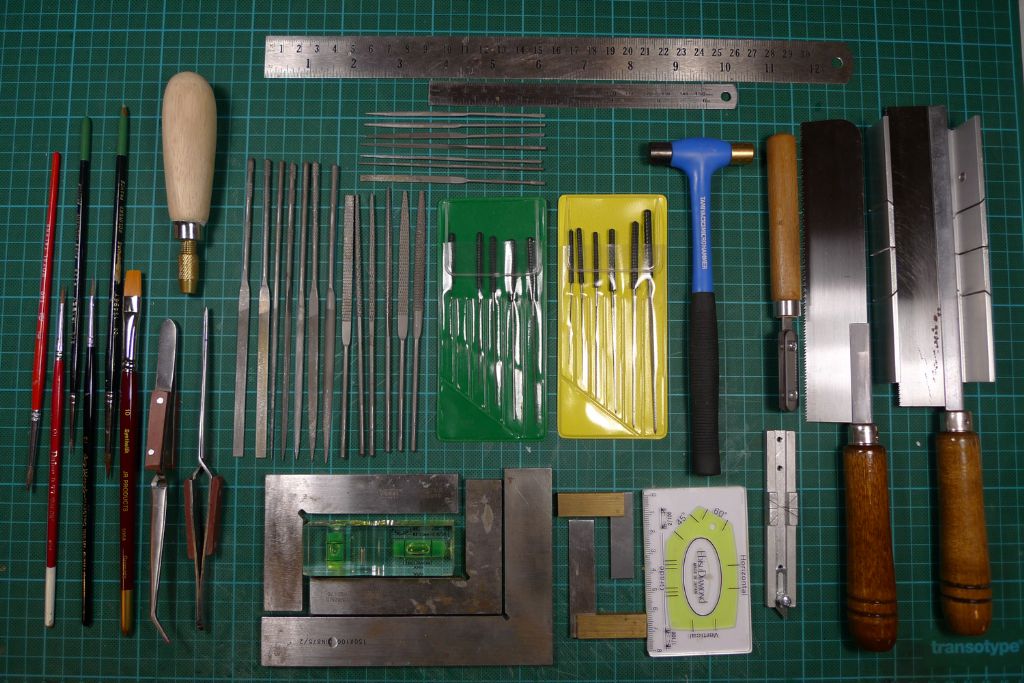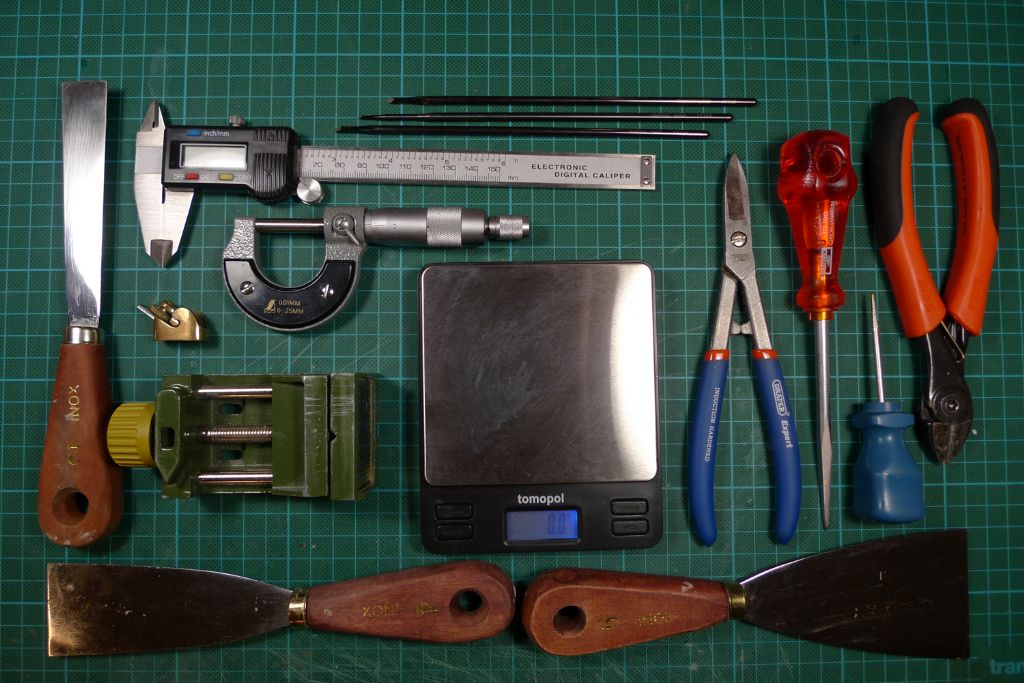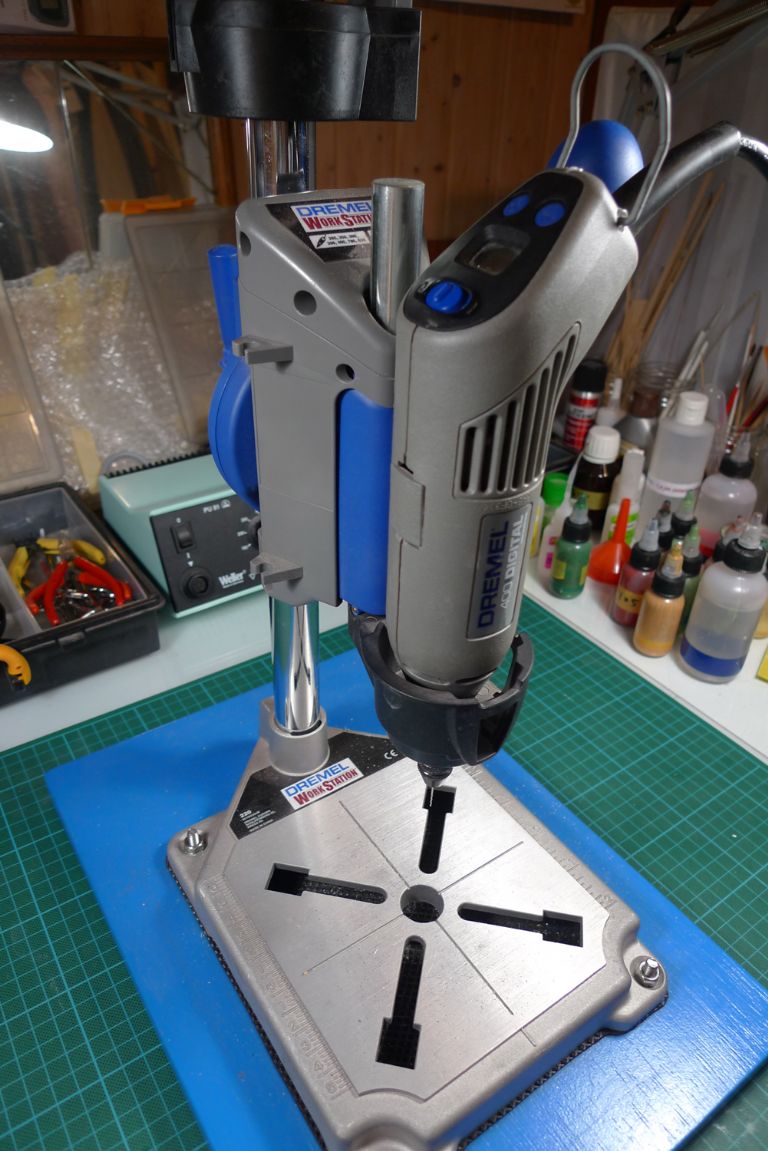Hi Barry, I have been modelling for 20+ years [45+ models] and I don't think I have all that Mattias has shown.
My first build was the Viking ship from Billings, everything had to be cut out as there were no laser cut parts then. At least the wood sheet was printed with the plank shape (with 1mm thick lines!) My first tool was a small saw with two blades, I still have it and use it even now after 20years. At some point I got a table edge vice, ruler and a pin pusher for setting small nails into wood. A set of small files and sand paper also needed. That was it, I assume glue is a must, but not a tool. A plastic set square from a stationers (though a corner of paper is square) to set up the ribs.
My next build was a Bounty, and my tools expanded to include tweezers, scissors, scalpel with various blades (because they were there I thought I needed all different shapes) but now only ever use 10A blades. Another exacto saw with 3 blades, small archimedes drill and set of small drill bits. Pliers were handy but then what DIY man doesn't already have some. I've only just last year got round nose pliers for bending wire, for instance. The model was built.
You are starting with a kit, so almost all the major parts will be cut for you. AND, not seen it yet, you'll need a building board as long as the model to set up the basic ribs etc for squareness. Any piece of flat wood big enough to take the length and width of the boat, melamine shelf for example, so long as it is flat and level.
The big stiff was only ever thought of when I started scratch building, and then only as second hand stuff till I found I could use it. A pillar drill and dremmel, small motor craft lathe as I wanted to turn some spars etc. Only added things as I went along. There is no absolute kit, when you find a need for a tool then get one. Its the old adage, you buy a tool and then find you never use it. There are, as DM points out, some totally useless items around, cheap and nasty. For example, I do a lot of period ships and rigging. There is a rig sold for tying ratlines off the model and then you offer up your creation to the mast – my opinion – its useless.
I now have two band saws, two pillar drills and two table saws plus a router and a drills and reading lamps, magnifiers etc etc etc. I made a paint spraying booth,I have airbrushes. The list is endless, just buy when the need arises, but then only after you've looked around and asked what seems to be best for the job wanted.
Good luck with the build, I have Jotika's HMS Snake on the building board (started over 3 years ago), first planking almost completed. I always have several builds ongoing together, stops me getting bored with the one. And before that discussion starts, yes, do the two layers of planking. The first will be your first so experiment to get it nearly right. The second layer will then become much easier. This layer shows, so make it good.
I'll keep abreast of your build, at least there are some very good build threads for your model out there, but most of all, enjoy the experience and don't rush!
Aye, Kim


 , as these blades are sharp as the dickens.
, as these blades are sharp as the dickens.







